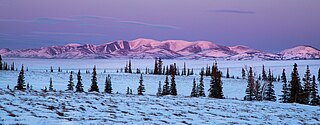Subarctic
This article needs additional citations for verification. (March 2019) |

The subarctic zone is a region in the
Daylight at these latitudes is quite extreme between summer and winter due to its high latitude. Near the summer solstice for instance, subarctic regions can experience an all-night period of either civil, nautical, or astronomical twilight (or in the northern reaches full daylight), but without true night, since the sun never dips more than 18 degrees below the horizon. Noctilucent clouds are best observed within this range of latitude.
Climate and soils

Subarctic temperatures are above 10 °C (50 °F) for at least one and at most three months of the year. Precipitation tends to be low due to the low moisture content of the cold air but isn't to the point to
Subarctic regions are often characterized by
Except for those areas that are well-drained or adjacent to warm
Economy


Except for a few parts of Europe where the winters are relatively mild due to prevailing wind and ocean current patterns, subarctic regions were not explored until the 18th and 19th centuries. Even then, the difficulty of transportation ensured that few settlements (most of them are created for mining) lasted long—such as the abandoned, once-thriving cities of the Yukon, Northwest Territories[4] and increasingly Siberia illustrate this.
The
Tourism in recent years has become a major source of revenue for most countries of the subarctic due to the beautiful, generally glacial landscapes so characteristic of the region. Most areas in the subarctic are among the most expensive places in the world to visit, due to both high costs of living and transportation inaccessibility. Nonetheless, the great opportunities for outdoor recreation lure an ever-increasing number of travelers. At the same time, the older industries of the subarctic (fishing, mining, hydroelectric power) are being threatened by both environmental opposition and overfishing leading to depleted stocks of commercially important species living in this region.
See also
References
- ^ "Podzol | Encyclopedia.com". www.encyclopedia.com. Retrieved 24 March 2022.
- ^ Hays, Jeffrey. "NATURAL RESOURCES IN RUSSIA | Facts and Details". factsanddetails.com. Retrieved 24 March 2022.
- JSTOR 40509243.
- ^ "Fort Yukon | historical settlement, North America | Britannica". www.britannica.com. Retrieved 24 March 2022.
External links
- "Subarctic climate" in: Ritter, Michael E. The Physical Environment: an Introduction to Physical Geography. 2006.
